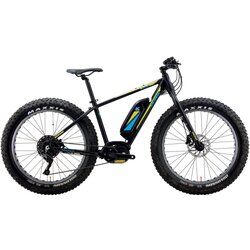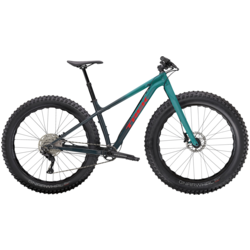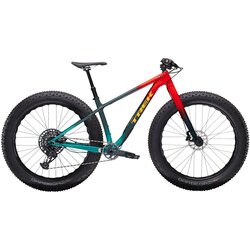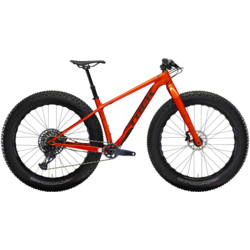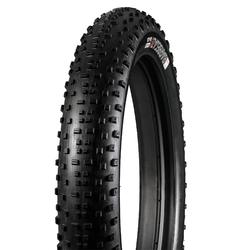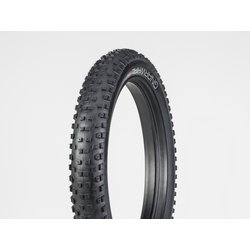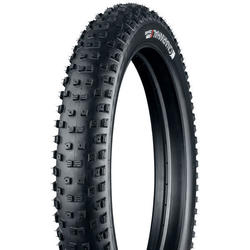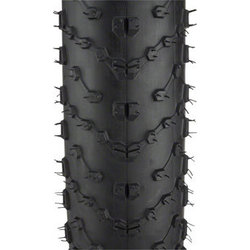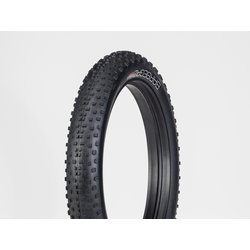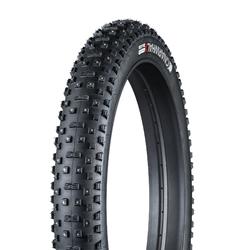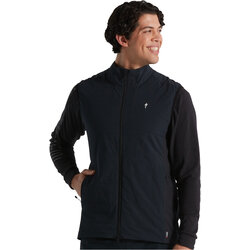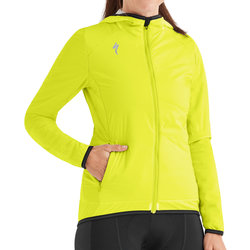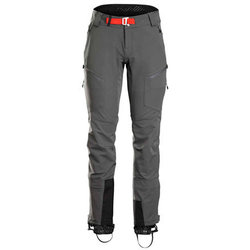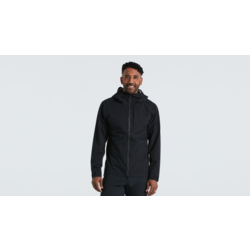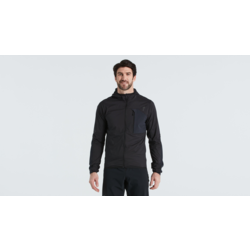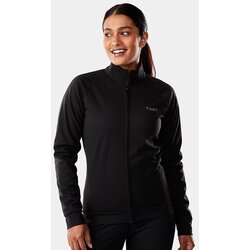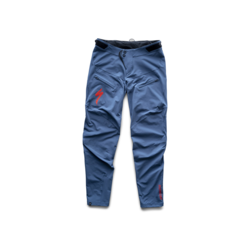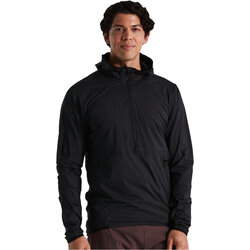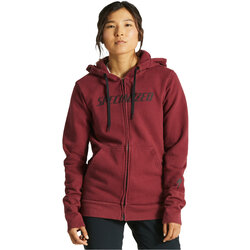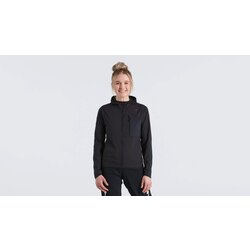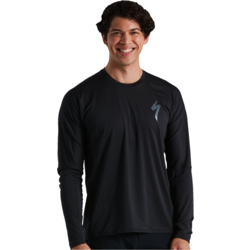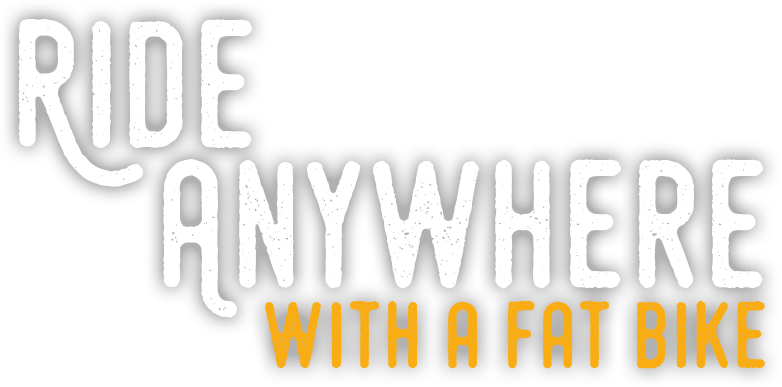
A True All-Terrain Bike
Fat bikes are off-road bikes that feature wider tires, traditional mountain bike geometry, and durable components so that you can have fun on the trails (or in the woods or on the beach) all year long. If you're looking for a four-season freedom machine that lets you ride outside no matter what the weather or terrain, a fat bike is the perfect bike for you.
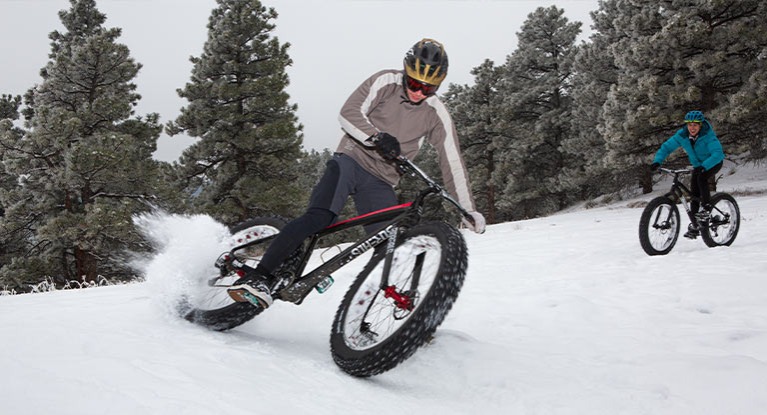
Bigger is Better
Enjoy superior traction with big, fat tires. These bikes are typically equipped with 3.8 inch or wider tires, and are designed to support lower pressure for better surface contact. What that means for you is unparalleled traction and stability in soft, sketchy terrain such as snow, sand, mud, and loose gravel.
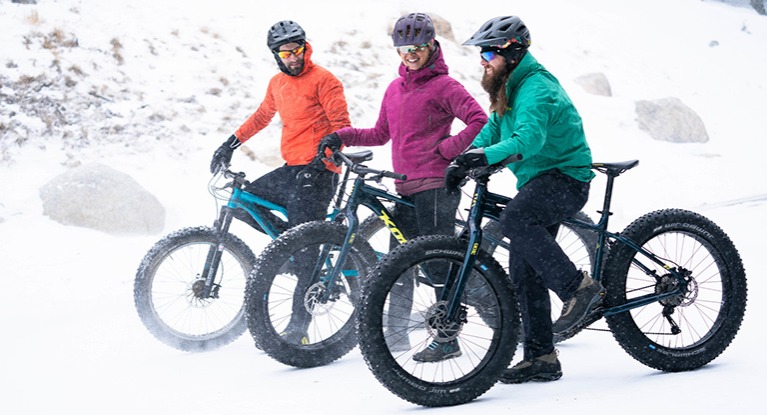
Handle Anything
If you're thinking that a bike designed with giant tires is going to feel sluggish under you, come in and try one out - we know that you'll be pleasantly surprised. Fat bikes feature compact geometry that is characteristic of a traditional trail bike, ensuring that you don't compromise handling or responsiveness as you're out playing in the rain and snow.
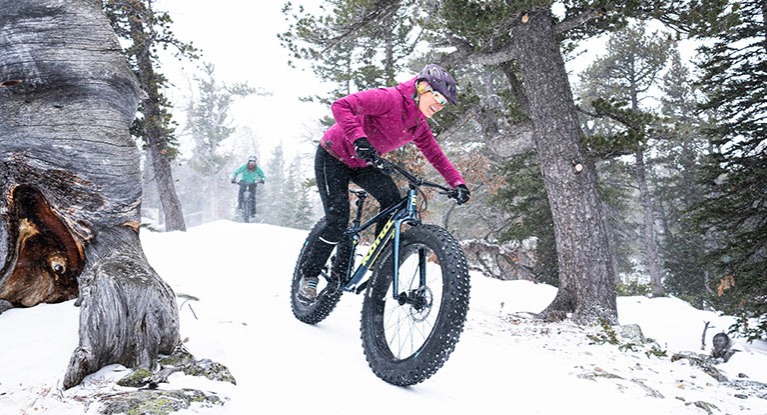
Remarkable Versatility
The conditions that a fat bike can handle aren't the only thing that makes this bike category so versatile. Fat bikes come in a variety of frame materials, include carbon fiber, aluminum, and steel, and with a range of component groups and suspension setups. Explore our selection online and visit us today to find the fat bike that's right for you.
CUYUNA LAKES MOUNTAIN BIKE TRAIL
WINTER FAT BIKE GUIDELINES
Allowed Uses
Foot travel on skis or snowshoes only.
Bicycles with tires at least 3.7" wide.
No winter restrictions on the groomed, paved Cuyuna Lakes State Trail for hiking and biking. State Park rules still apply.
Prohibited Uses
Foot travel (except as permitted).
Pets on the groomed trails.
Activities, which damage groomed trail.
Biking on the snowmobile trail from December 1st to April 1st while in the boundaries of the CCSRA.
Guide For Groomed Trails
Reduce tire pressure. 2-4 psi in soft snow and do not exceed 8 psi when snow conditions are firm.
Trails close to biking right after they have been groomed but remain open to snowshoeing and skiing.
Trails are generally groomed right after its done snowing; the single track trails are groomed by volunteers so please give a minimum of 48 hours before expecting a bike rideable surface.
Freshly groomed trails are very soft and easily damaged until it can refreeze and firm up. Trails are generally groomed in the afternoon/evening hours and reopen to biking at 8 am the next day.
If an orange cone is set up at a trail entrance point in the afternoon/evening hours it means that trail was recently groomed, if the cone is still in place at 8 am the next day please set it off to the side of the trail so the trail can reopen.
If you are leaving tire ruts in the groomed trails that is considered damage and the trails are closed to that activity.

